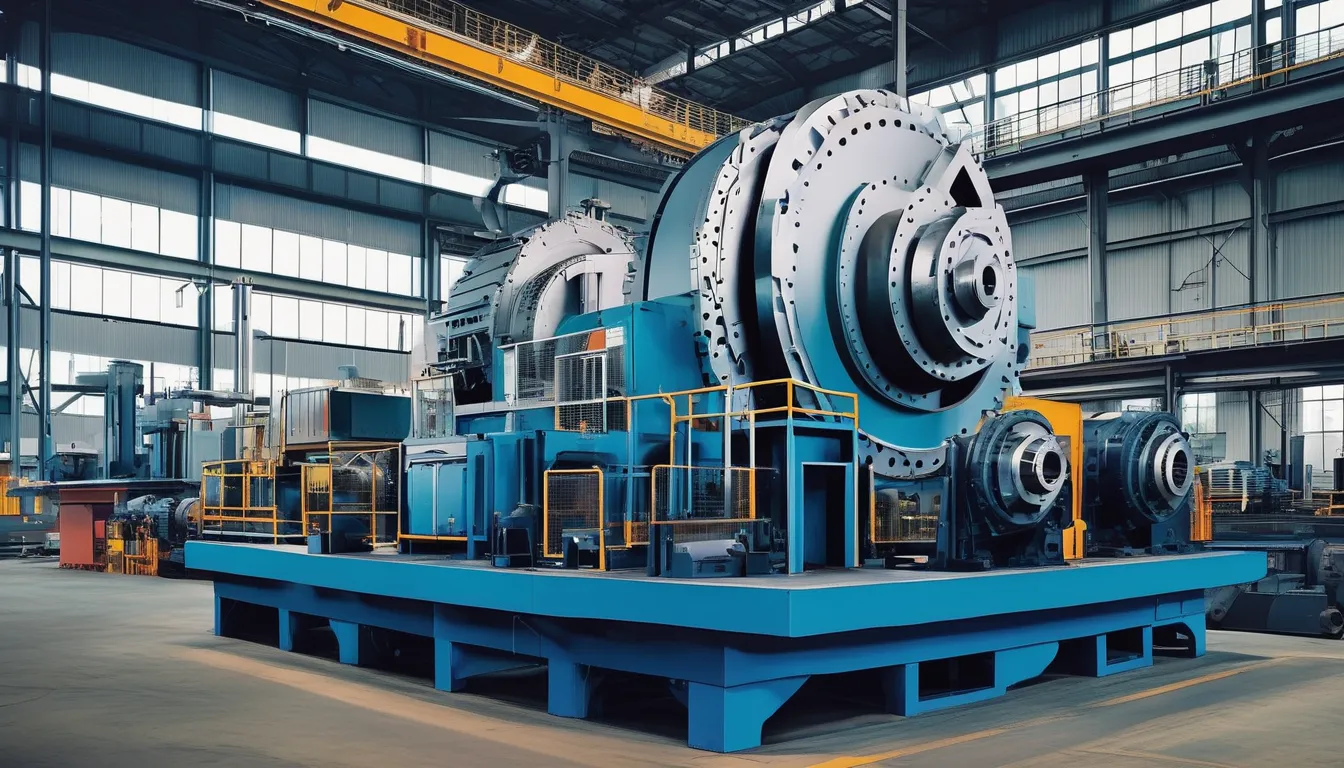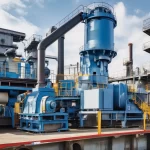As you explore the realm of industrial gearboxes, you’ll find a landscape evolving with cutting-edge technologies that are reshaping the very core of manufacturing processes. From IoT sensors that revolutionize maintenance strategies to the rise of digital twins predicting potential issues, each trend plays a vital role in enhancing gearbox efficiency and performance. Moreover, advancements in 3D printing and automation are pushing boundaries, while enhanced data analytics and machine learning pave the way for self-optimizing smart gearboxes. The future of industrial gearboxes is undoubtedly intriguing, offering a glimpse into a world where innovation and precision seamlessly intertwine.
IoT Integration and Predictive Maintenance
When it comes to industrial Industrial Gear Drive es, IoT integration and predictive maintenance have revolutionized the way maintenance is approached. By incorporating IoT technology into industrial gearboxes, you gain real-time insight into the functioning of your machinery. Sensors embedded within the gearbox can monitor variables like temperature, vibration, and lubrication levels, allowing you to detect potential issues before they escalate. This proactive approach significantly reduces downtime and maintenance costs, ensuring optimal performance of your equipment.
Predictive maintenance takes this a step further by using data analytics and machine learning algorithms to predict when maintenance is required based on the gearbox’s actual condition, rather than a predetermined schedule. This predictive capability enables you to plan maintenance activities more efficiently, avoiding unplanned downtime and extending the lifespan of your gearboxes.
Rise of Digital Twins
The rise of digital twins in industrial gearboxes has transformed the way equipment is monitored and maintained. By creating a virtual replica of a physical gearbox, digital twins allow for real-time monitoring and analysis of its performance. This technology enables you to predict potential issues before they occur, optimizing maintenance schedules and minimizing downtime.
Digital twins utilize data from sensors embedded in the gearbox to provide valuable insights into its operation. Through advanced analytics and machine learning algorithms, these digital replicas can simulate different scenarios, helping you make informed decisions to enhance performance and efficiency.
By monitoring key parameters such as temperature, vibration, and lubrication levels, digital twins enable proactive maintenance strategies, reducing the risk of unexpected failures.
Furthermore, digital twins facilitate remote monitoring, allowing you to access critical gearbox information from anywhere. This capability enhances overall equipment effectiveness by enabling quick troubleshooting and decision-making.
Embracing digital twins in industrial gearboxes isn’t just a trend but a smart investment in improving operational reliability and productivity.
Advancements in 3D Printing
Advancements in 3D printing technology have revolutionized the manufacturing industry, offering innovative solutions for creating complex components with speed and precision. 3D printing, also known as additive manufacturing, allows for the production of intricate gearbox parts that traditional manufacturing methods struggle to achieve. This technology enables customization, rapid prototyping, and cost-effective small-batch production.
| Benefits of 3D Printing in Gearbox Manufacturing | ||
|---|---|---|
| Complex Geometries | Rapid Prototyping | Cost-Effective Small-Batch Production |
| Ability to create intricate shapes and structures | Quick production of prototypes for testing | Cost savings in producing low volumes of parts |
| Reduces the need for assembly of multiple components | Faster product development cycles | Less waste and lower tooling costs |
These advantages make 3D printing a game-changer in the gearbox manufacturing sector, providing engineers with new design possibilities and streamlining the production process.
Automation and Robotics in Gearbox Manufacturing
Pioneering a new era in gearbox manufacturing, automation and robotics have emerged as pivotal technologies reshaping production processes.
Automating gearbox manufacturing offers numerous advantages, such as:
- Enhanced Precision: Robots can perform intricate tasks with unparalleled accuracy, ensuring each gearbox component meets exact specifications.
- Increased Efficiency: Automation streamlines production lines, reducing downtime and enhancing overall productivity.
- Improved Safety: Robots can handle hazardous materials and heavy machinery, minimizing the risks associated with manual labor.
Implementing robotics in gearbox manufacturing also allows for greater customization and flexibility in production, adapting quickly to changes in demand and design requirements.
By integrating automation into the manufacturing process, companies can achieve higher levels of consistency and quality control while optimizing operational costs.
As technology continues to evolve, the role of automation and robotics in gearbox manufacturing will undoubtedly become even more integral to the industry’s advancement.
Enhanced Data Analytics and Machine Learning
With the rapid growth of data analytics and machine learning technologies, gearbox manufacturers are now leveraging advanced tools to optimize production processes and enhance performance. By implementing enhanced data analytics, manufacturers can gather valuable insights from gearbox operations, leading to proactive maintenance schedules and improved efficiency. Machine learning algorithms analyze vast amounts of data in real-time, enabling predictive maintenance to prevent costly downtimes.
Moreover, the integration of machine learning in gearbox manufacturing allows for the development of smart gearboxes capable of self-optimizing based on operational data. These intelligent gearboxes adapt to changing conditions, maximizing performance and longevity.
Conclusion
In conclusion, by embracing IoT, digital twins, 3D printing, automation, and advanced data analytics, industrial gearboxes are undergoing a technological evolution that is revolutionizing the manufacturing industry. With real-time insights, predictive maintenance, rapid part production, automated processes, and optimized performance, smart gearboxes are paving the way for increased efficiency, reduced downtime, and cost savings. Stay ahead of the curve by integrating these top technological trends in your gearbox production processes.


